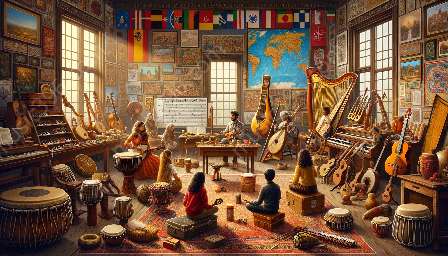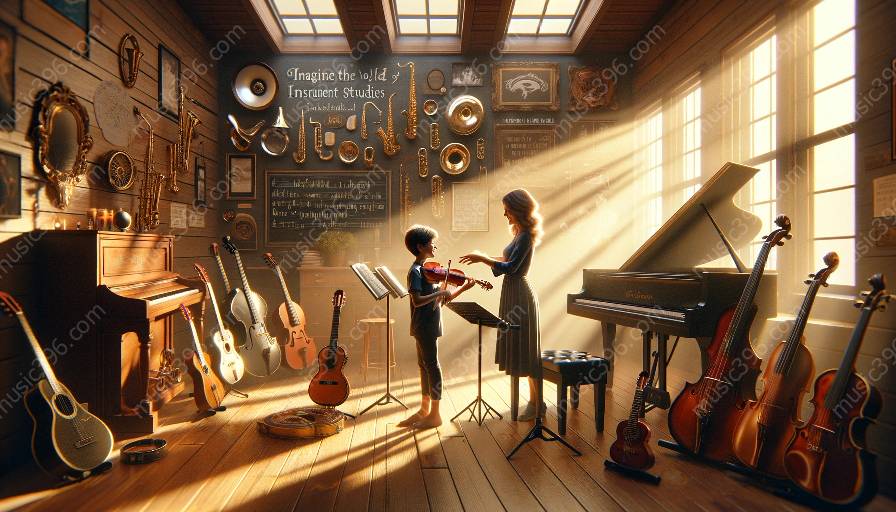Music is a universal language that transcends cultural boundaries, and instruments play a crucial role in conveying a society's customs, traditions, and values. The symbolism and cultural significance of instruments provide a rich tapestry of insight into the diverse ways people express themselves through music. As such, understanding the symbolic meanings behind instruments can enhance instrument studies and music education, fostering a deeper appreciation of various musical traditions.
The role of instruments in different cultures
Throughout history, instruments have held great symbolism and cultural significance in societies around the world. In many indigenous cultures, instruments are deeply intertwined with spiritual beliefs and ceremonies, serving as conduits for connecting with the divine or communicating with ancestors. For example, the didgeridoo, an ancient wind instrument originating from Indigenous Australian culture, is believed to possess the power of healing and spiritual connection. Similarly, the Native American flute is traditionally associated with storytelling and ceremonial practices, representing a link between the natural world and the spiritual realm.
In other cultures, such as those in Asia, specific instruments carry symbolic meaning and are incorporated into various rituals and traditional music genres. The sitar, a plucked string instrument from India, symbolizes virtuosity and musical refinement, and is often associated with Indian classical music and spiritual enlightenment. On the other hand, the guqin, a seven-stringed zither from China, holds deep cultural significance, embodying philosophical concepts and ethical values. Understanding the cultural symbolism of these instruments is essential in appreciating their role in music education and performance.
Instruments as expressions of identity
In addition to their spiritual and cultural significance, musical instruments serve as powerful expressions of identity and heritage. In many societies, the choice of instrument and the manner in which it is played can reflect social status, gender norms, and historical narratives. For instance, the bagpipes in Scottish culture are emblematic of national pride and resilience, evoking stirring emotions and commemorating historical struggles. Similarly, the mbira, a traditional thumb piano from Zimbabwe, represents a connection to ancestral roots and familial lineage, often being passed down through generations as a cherished heirloom.
Furthermore, instruments are integral to the preservation of indigenous languages and customs. For indigenous communities, instruments are vital in transmitting oral traditions and narratives, providing a tangible link to cultural heritage. Through the process of instrument studies and music education, these traditions can be safeguarded and celebrated, creating a platform for intergenerational knowledge exchange and cultural continuity.
Integrating symbolism and cultural significance into instrument studies and music education
By incorporating the symbolism and cultural significance of instruments into instrument studies and music education, educators can enrich students' learning experiences and foster a more profound understanding of global musical traditions. Implementing multicultural perspectives and diverse repertoire that highlight the symbolic meanings of instruments can broaden students' perspectives and cultivate empathy and respect for different cultural expressions.
Moreover, exploring the cultural context of instruments can inspire students to engage in meaningful dialogue about social justice, equity, and inclusivity within the realm of music. By acknowledging the historical and cultural dimensions of musical instruments, educators can empower students to recognize the impact of music on social change and advocate for cultural diversity and representation in the arts.
Conclusion
The symbolism and cultural significance of instruments encapsulate the vibrancy and diversity of human expression through music. Understanding the symbolic meanings behind instruments fosters an inclusive and empathetic approach to instrument studies and music education, celebrating the richness of global musical traditions. By acknowledging the cultural significance of instruments, educators and students can embark on a journey of discovery, appreciation, and interconnectedness through the universal language of music.















